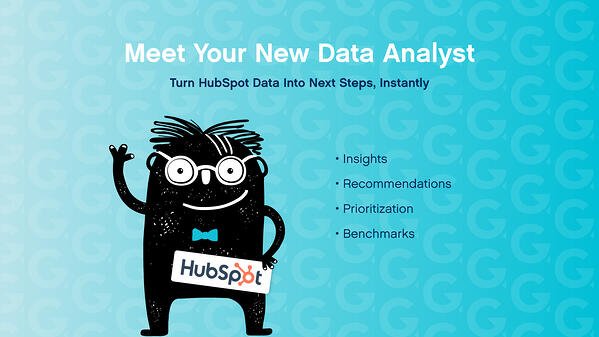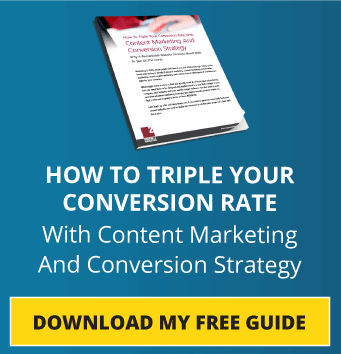
What Is A Good Conversion Rate For Your Landing Pages?
Kick Off 2020 With Increased Lead Generation Through Landing Page CRO
.jpg?width=300&name=GettyImages-1038451414%20(1).jpg) “This post was selected as one of the top digital marketing articles of the week by UpCity, a B2B ratings and review company for digital marketing agencies and other marketing service providers.”
“This post was selected as one of the top digital marketing articles of the week by UpCity, a B2B ratings and review company for digital marketing agencies and other marketing service providers.”
Landing pages are different than general website pages. For more details on the difference, check out this article, Website Home Page vs. Landing Page: What’s The Difference?
Typically, landing pages have different designs, different objectives, different approaches and different conversion strategies.
If you’re not looking at your landing pages with a different lens than the one you use for your website pages, you’re not fully optimizing your lead generation efforts.
But what makes a good landing page? How do you know if a 20% conversion rate is bad, good or outstanding?
You can search for “landing page conversion rates” and find a ton of articles on what someone thinks is a good conversion rate, but that won’t help.
The correct answer is that no one really knows, and general blog info on standard conversion rates will only cause you to make bad decisions about your own pages.
Your pages, your site, your prospects and your messaging are all different, and there are no solid averages or benchmarks for you to use when evaluating your own performance.
The true answer is you should be improving month over month.
When it comes to measuring landing page conversion rates and working to improve that month over month, here’s what you should be considering.
Industry Benchmarks Might Matter
You probably can’t help yourself, so you run a quick Google search on landing page conversion rates and you uncover a WordStream article and an Unbounce article. These both offer primary research on landing page conversion rates.
Most of the other articles are from agencies repeating the same content in both of those articles. You can skip those, but the WordStream and Unbounce articles do provide at least a starting place.
The research in both of those articles reveals that a guideline for landing page conversion rates is between 3% and 5.5%.
However, this is why I don’t like benchmarks. I’ve never seen a single landing page at Square 2 or with any of our clients perform that poorly.
Our research shows that landing page conversion rates should start at 20% and could go as high as 60%. That is a wide spread, and that’s why your baseline conversion rate is much more important than any published benchmarks.
However, industry does matter.
At Square 2, we use MAXG, an AI-powered insight and recommendation engine that does provide us with industry benchmarks, so we know our software clients should be closer to 20%, our manufacturing clients in the 15% range and our professional services clients around 11% for a landing page conversion rate.
Again, this is just a guide and a starting point for our work with clients in these industries. These numbers are the minimum we’re looking for, and with our help, most of those numbers should double in just a few weeks.
You Can Always Do Better
Landing page conversion rates are one of the most important metrics when it comes to lead generation.
Leads looking low this month? Check out the highly visited landing pages and make a few adjustments.
Paid ads not working? Consider changing the page you’re promoting from a website page to a landing page.
Email outreach plateauing? Design a custom landing page for that specific audience and specific email campaign.
All three of these tactical upgrades will increase program performance in days, not weeks or months.
The quick-fix capabilities in landing page conversion work mean it should be part of what you do every month, day in and day out.
Regardless of your metrics, build in continuous conversion rate optimization work every week and you should see these landing page conversion rates increasing over time.
Start With A Process For Testing
Perhaps this idea of constant optimization of your landing pages needs more detail. Which pages do you start with? What changes should you be making? How do you know when you’ve topped out? How long should you wait to expect to see changes? How many changes should you be making at one time?
These are all great questions. Instead of dealing with them one off, you should want to build a system or a process that allows you or anyone on your team to follow your landing page conversion rate optimization playbook every single month.
To do that effectively, you need to stop thinking like a marketer and start thinking like a scientist. Scientists start with data, so here’s the data you’ll need to get started:
- A list of every single landing page URL
- The current number of visits each page gets each month (the average for the past 12 months and the individual 12 months of data so you can see if the page is trending up, flat or down)
- The current conversion rate from the most recent month
You’re going to want to look at this data monthly, and you’ll use this data to set up your system.
We’re going to start with the pages that have the most visitors (average visits per month).
Next, we’re going to look at the conversion rates for those highly visited pages. We’re looking for low conversion rates on high-trafficked pages. This is the insight that provides the biggest opportunity for improvement.
Here is some sample data.
| Landing Page | Avg. Visitors/Month | Conversion Rate |
| Landing Page 1 | 500 | 10% |
| Landing Page 2 | 456 | 26% |
| Landing Page 3 | 344 | 50% |
| Landing Page 4 | 320 | 5% |
| Landing Page 5 | 190 | 12% |
This gives us the key to prioritization.
We’re going to start with Landing Page 1 (highly visited with a low conversion rate). Next, we’ll do Landing Page 2. While it is converting better than Landing Page 1, the volume means that if we can improve the conversion rate even more, we can drive many more leads.
Next, we’ll look at Landing Page 4, which happens to be a Contact Us page. These are typically low-converting pages because people often visit here looking for directions, office phone numbers, office locations, etc.
This further justifies understanding the purpose of specific pages and responding accordingly. Because we understand the goal of the page, we’re skipping any optimization effort this month.
Then, we’ll work on Landing Page 5, which has lower traffic but still needs help with its conversion rate.
Landing Page 3, which has a very high conversion rate and decent visitor performance, might be good to look at to see if we can uncover what’s contributing to that very high 50% conversion rate.
Now that we have our pages prioritized, let’s get to work.
Remember, you’re thinking like a scientist, and scientists are trying to learn something. What you’re trying to learn is what changes drive increases in conversion rates.
To learn, you have to experiment. Remember, experiments fail, so get ready for failure.
Colin Powell said, “There are no secrets to success. It is the result of preparation, hard work and learning from failure.” Keep that in mind as you start experimenting.
The last guidance I’ll provide around testing and experiments is one that might be hard to follow. When you run tests, you want to change just one element or variable at a time. For example, if you change the form on the landing page from five fields to three fields, don’t make any other changes until you’ve run your test long enough to know if that change produced positive results.
If you make two changes at the same time, you’ll never know which was the trigger for the improvement. I’ve seen marketers make this mistake over and over again. In your enthusiasm for improvement you make four changes and the numbers go up, but you haven’t learned what caused those numbers to go up.
Try your hardest to make only one change at a time until you gain the insights you need to start applying your new knowledge to every new landing page.
What Changes To Test
Now you have a system for tackling conversion rate optimization on your landing pages and a prioritization methodology to help you know what pages to work on in what order, but we only touched on the list of upgrades you should consider when making changes.
Landing pages have a finite set of elements, so the good news here is you should only be considering a handful of changes.
You can change the form design, length, labels and required fields. The form does have a big impact on conversion rate. The more fields, the lower the conversion rate usually is, so try to stick with only what’s necessary.
You have your headline and your sub-headline (most pages have both). What we see most is that the sub-headline is generally practical and instructional, while the headline is more creative. One change that works wonders for our clients is to swap them.
Here is an example from a landing page on the Square 2 site. It’s one of our top-performing landing pages.
Headline – The Mega Guide To Revenue Growth
Sub-Headline – Get The Metrics You Need To Grow Your Business
This example is pretty practical out of the gate. What can we say? We’re no fluff.
But you could consider swapping these. The sub-headline contains the information people really want, and it might grab their attention more aggressively.
Data supports that you should use a headline that connects visitors with their intent. They are on this page to get this guide, so why make it more obscure?
Other changes to consider include swapping out the image or adding an image. If you’re offering content, like we are in this example, let visitors see what they’ll be getting.
You can shorten your copy. Make sure you use bullets. People don’t read, they skim. The more efficient your copy, the more compelling and the more emotional, the higher the conversion rate. Words matter.
You can add a testimonial about the content or offer. This testimonial would be related to your offer, not your company.
You can add a video to the page. Words matter, but so does video. Many people want to watch instead of read.
When you’re all done, you might be looking at eight to 10 things you can test on a landing page.
You can cycle through your testing in just a few months, depending on the visitor data. You always want enough data to make you feel like your decisions were based on data and not guesses, opinions or assumptions.
You don’t need to be statistically confident by any means, but you do need to have enough data to be confident in your decision.
Once you have all of this set up, you’ll quickly have a baseline on your own landing page performance, a prioritization methodology, a system to improve that performance and a number of experiments ready to go to continue to improve performance over the next couple of months.
In no time, you’ll be seeing leads improve from these landing pages, and the knowledge to drive lead generation is going to help you apply those insights across your entire marketing program.

CEO and Chief Revenue Scientist
Mike Lieberman, CEO and Chief Revenue Scientist
Eliminate Hit-or-Miss Marketing Moves
Get advice, tips, tools and guidance to generate more leads for your company in this weekly email newsletter.



Eliminate Hit-or-Miss Marketing Moves
Get advice, tips, tools and guidance to generate more leads for your company in this weekly email newsletter.















